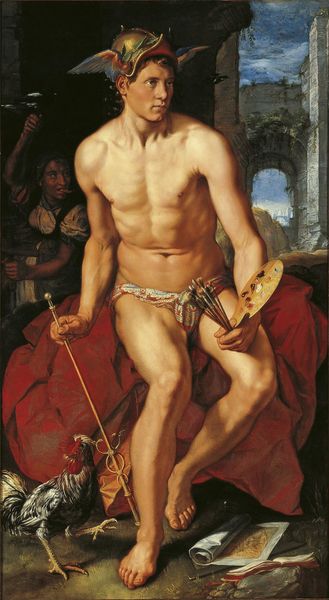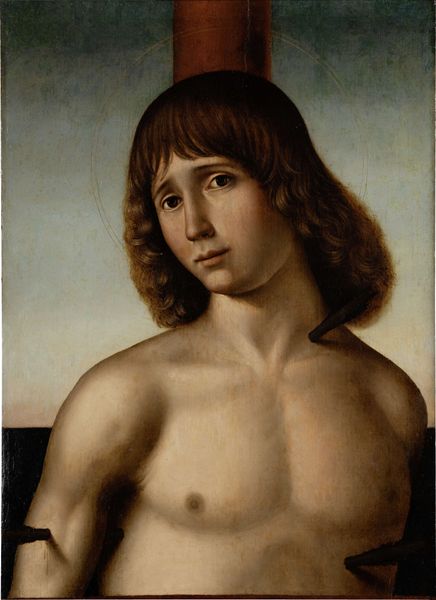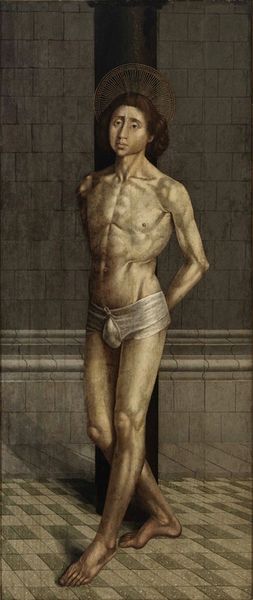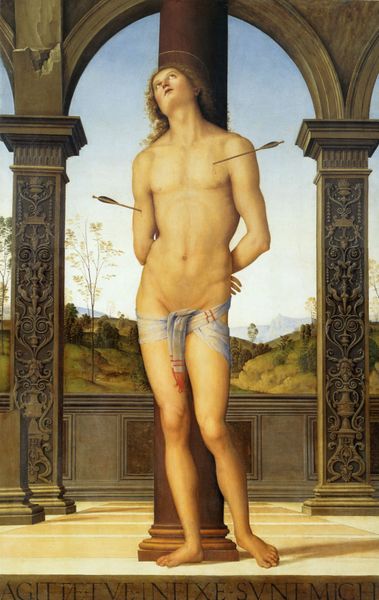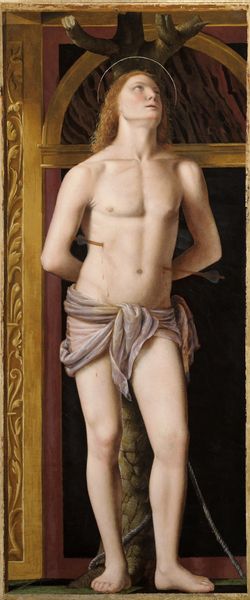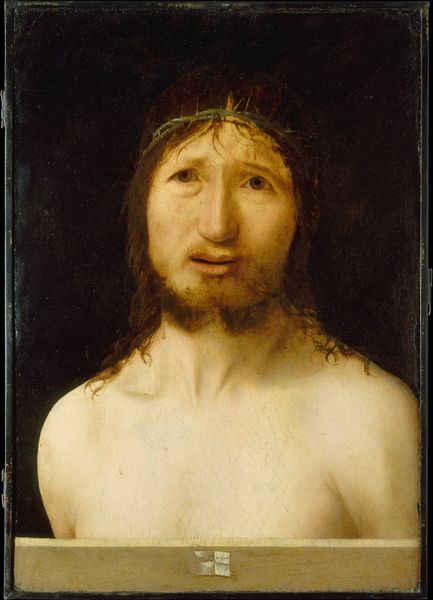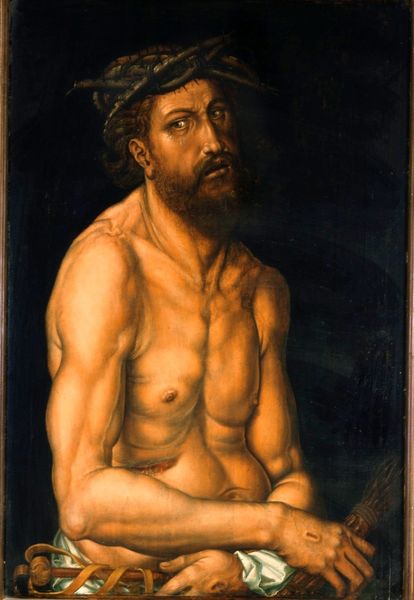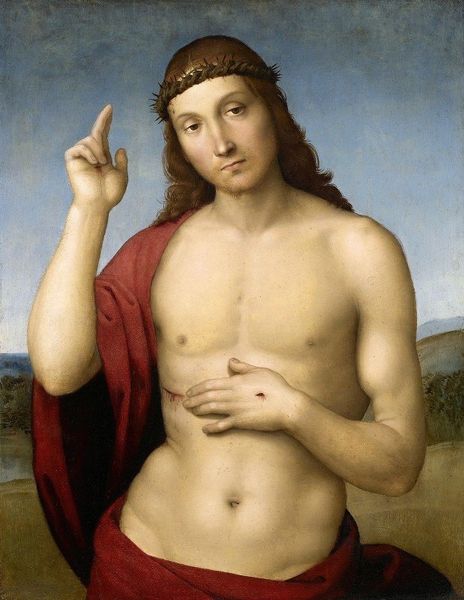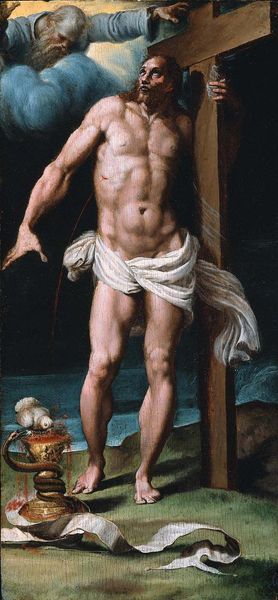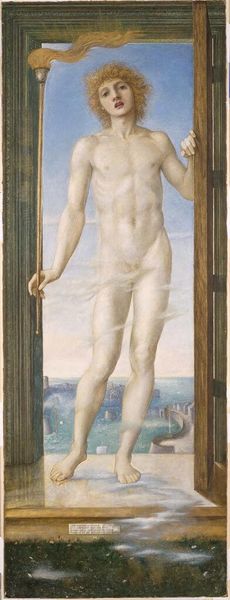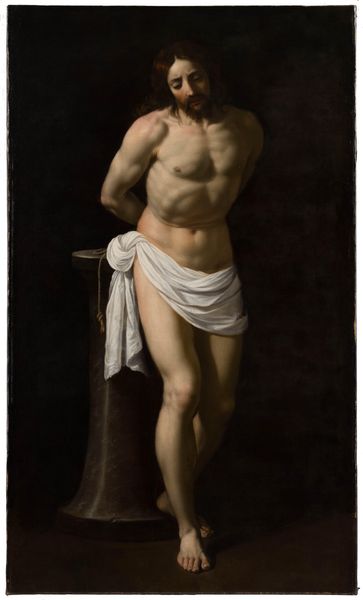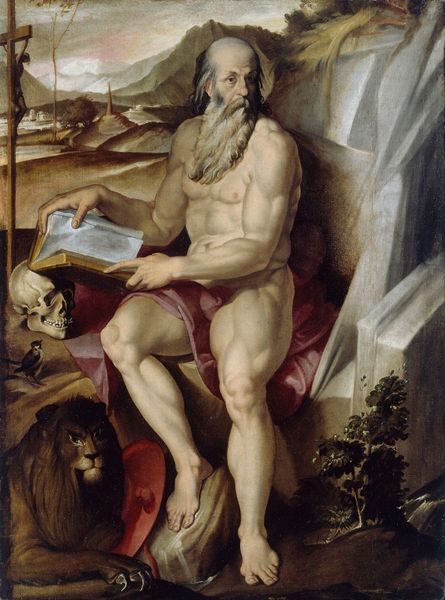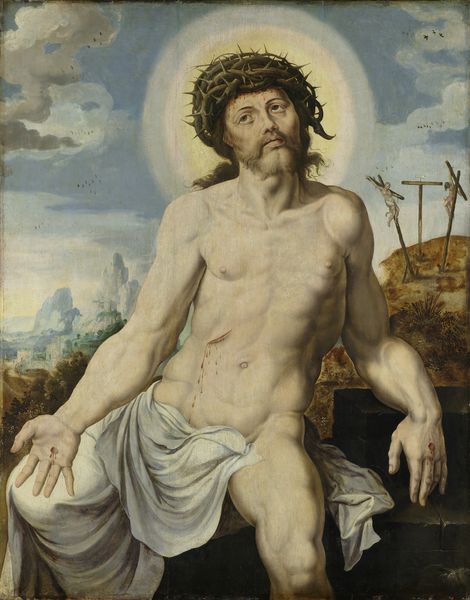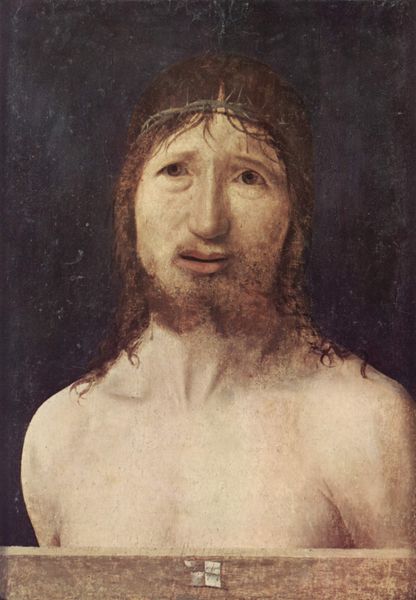
painting, oil-paint
#
portrait
#
high-renaissance
#
painting
#
oil-paint
#
figuration
#
oil painting
#
history-painting
#
italian-renaissance
#
nude
#
realism
Copyright: Public domain
Curator: Standing before us is Donato Bramante’s "Christ at the Column," painted around 1480. A masterwork from the High Renaissance, showcasing the artist's acute realism through the oil paint medium. What catches your eye initially? Editor: The loneliness. There's this...starkness. It's a realism alright, but also a raw exposure, both literally and emotionally. And the almost too-perfect musculature seems to underscore the violation somehow. It is unsettling. Curator: Absolutely, unsettling is spot on. Bramante paints Christ as profoundly human. His physical suffering is almost secondary to this look of profound introspection, made possible through advancements in perspective. Think of it – the late 15th century, a time when artists were newly empowered to represent the world and the body in meticulous detail. Editor: And the column—is that about classical allusion, the architectural element turned into an instrument of torture? It’s staged, isn’t it? A bit…theatrical, I'd say? That's what sets it apart from raw depictions; that polished aesthetic is really trying to highlight meaning! Curator: Precisely! The theatricality links to how Renaissance art engaged with ancient sculpture and Roman imperial imagery, embedding both power and sacrifice within the painting. It reminds the viewer of civic responsibility within even the deeply spiritual moments of human history. Notice how the distant landscape and chalice further amplify Christ's coming sacrifice, for this place of community. Editor: All I see is this...really buff guy, though! A tragic figure transformed by social context, viewed and fetishized throughout a society with such vastly differing needs from those experiencing these conditions; so it’s hard for me to separate historical weight from present perception. It almost muddles the true original message, I’d reckon! Curator: True! Our perceptions are always layered through time and personal experience. Yet that very friction makes art so vibrantly alive. Ultimately, the canvas showcases how images of Christ in art always echo, and speak to our own age. Editor: Well said. Art that whispers across centuries; still triggering both questions and epiphanies. Thank you, now to go have that big existential question for myself, hahaha.
Comments
No comments
Be the first to comment and join the conversation on the ultimate creative platform.
